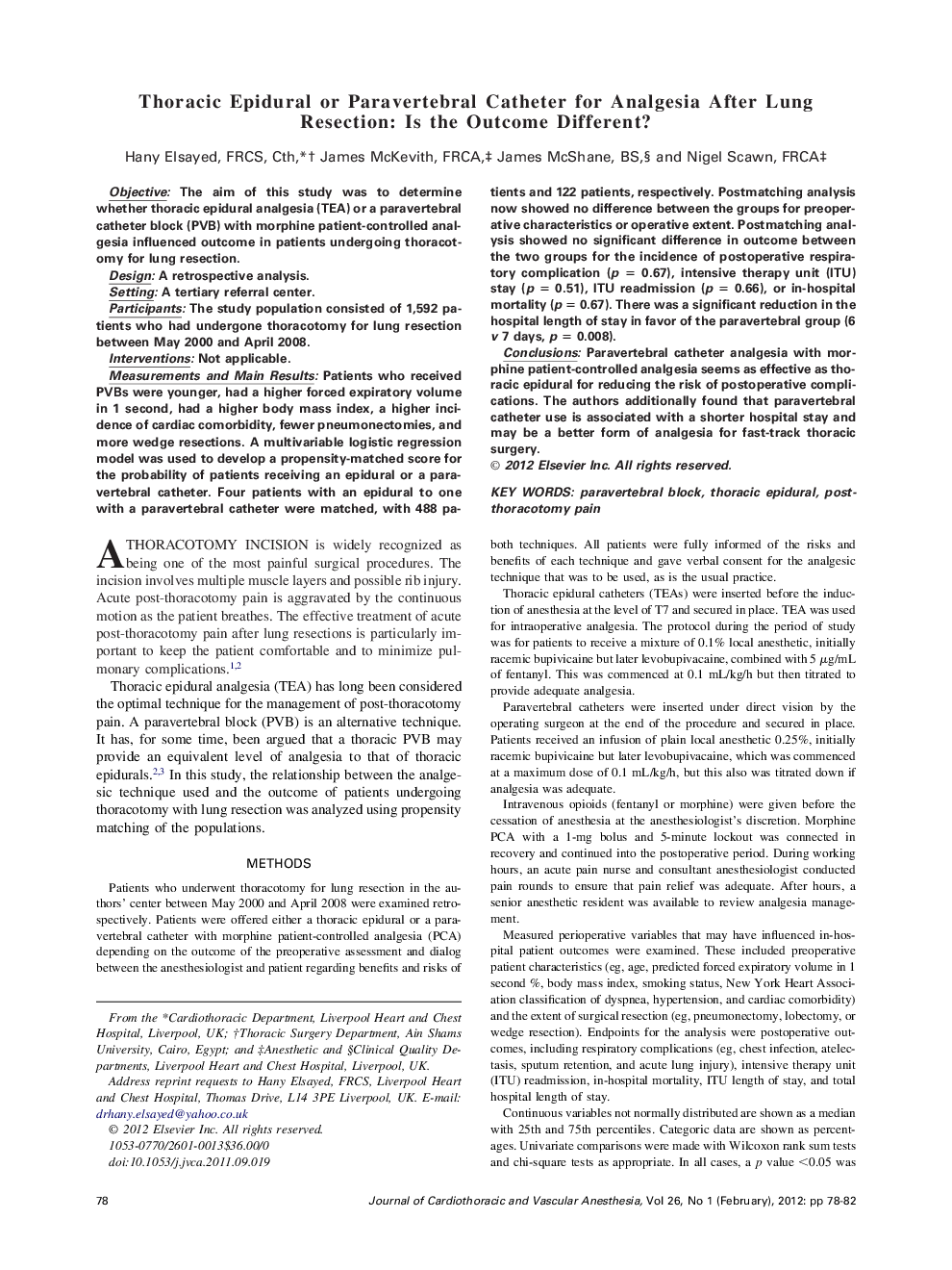| Article ID | Journal | Published Year | Pages | File Type |
|---|---|---|---|---|
| 2759618 | Journal of Cardiothoracic and Vascular Anesthesia | 2012 | 5 Pages |
ObjectiveThe aim of this study was to determine whether thoracic epidural analgesia (TEA) or a paravertebral catheter block (PVB) with morphine patient-controlled analgesia influenced outcome in patients undergoing thoracotomy for lung resection.DesignA retrospective analysis.SettingA tertiary referral center.ParticipantsThe study population consisted of 1,592 patients who had undergone thoracotomy for lung resection between May 2000 and April 2008.InterventionsNot applicable.Measurements and Main ResultsPatients who received PVBs were younger, had a higher forced expiratory volume in 1 second, had a higher body mass index, a higher incidence of cardiac comorbidity, fewer pneumonectomies, and more wedge resections. A multivariable logistic regression model was used to develop a propensity-matched score for the probability of patients receiving an epidural or a paravertebral catheter. Four patients with an epidural to one with a paravertebral catheter were matched, with 488 patients and 122 patients, respectively. Postmatching analysis now showed no difference between the groups for preoperative characteristics or operative extent. Postmatching analysis showed no significant difference in outcome between the two groups for the incidence of postoperative respiratory complication (p = 0.67), intensive therapy unit (ITU) stay (p = 0.51), ITU readmission (p = 0.66), or in-hospital mortality (p = 0.67). There was a significant reduction in the hospital length of stay in favor of the paravertebral group (6 v 7 days, p = 0.008).ConclusionsParavertebral catheter analgesia with morphine patient-controlled analgesia seems as effective as thoracic epidural for reducing the risk of postoperative complications. The authors additionally found that paravertebral catheter use is associated with a shorter hospital stay and may be a better form of analgesia for fast-track thoracic surgery.
